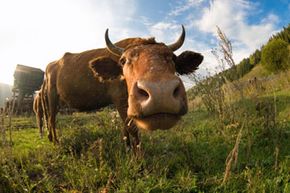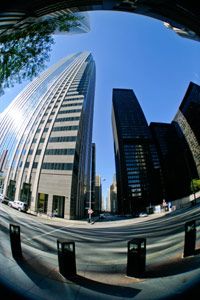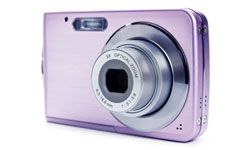One photographic technique can both captivate and disorient us. It can twist a baby into a wide-eyed, big-mouthed gargoyle, but can also render a panoramic night sky in striking detail. It's graced CD covers and countless advertisements, and is even being put to use to make our roads safer. The fisheye lens has a name you won't easily forget. And when this unique creative tool is used well, it can produce unforgettable images that bend our perception of reality.
Ask any professional photographer or amateur enthusiast and they'll tell you that there's an almost endless variety of lenses on the market. From ultra-long telephoto lenses that can capture wildlife from hundreds of yards away to wide-angle lenses designed to grab an entire landscape in one click of the shutter, a shooter with enough resources could have one lens for almost every situation she encounters.
Advertisement
Most of these lenses have a rectilinear design: Light entering the lens travels in a nearly straight path to the film or sensor (though all lenses are slightly curved). This renders straight lines as they appear in real life, wherever they are in the scene. Wide-angle lenses have short focal lengths, which is the distance, when a lens is focused on the farthest point possible, between the optical center of the lens surface — that is, the point in the lens, often at its center, where there is no distortion of light passing through it — and the film or sensor that receives the image. Short focal lengths allow wide-angle lenses to capture a wide angle of view. The edge of the image is stretched far to the left, right, top or bottom of the center of the captured scene [source: Atkins].
But while wide-angle rectilinear lenses can capture angles of view approaching 100 degrees, fisheye lenses can stretch that to 180 degrees — impossible to do without the light-bending science they employ. The tradeoff is distinct: Straight lines anywhere but dead center in the fisheye image appear to curve. The farther they are from center, the greater the curved distortion. This offers fun artistic avenues to explore, but it's also very useful. Some of the earliest fisheyes, for example, were built by astronomers to capture images of the starry night sky. In the digital age, these lenses allow one security camera to monitor a wide swath of property without moving, and automakers employ them as tiny backup cameras to help drivers stay safer on the road [source: Hughes].
Advertisement


